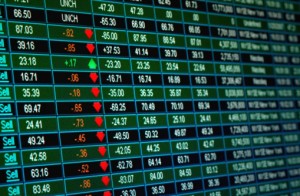The Irony of the S&P Downgrade
At Columbia last year I took a class called “Modern Political Economy” from Ray Horton. One of Horton’s favorite things to say was that sooner or later, if the U.S. didn’t solve its debt issues through the political process, the world’s capitalists would do it for us — as in the debt markets would punish us for our profligate ways, and raise the cost of borrowing.

(Hemera)
And yet, here we are: a ratings agency has downgraded our credit for the first time ever. But on the first day of trading, rather than going up, rates on our government debt fell to near record lows as money poured out of riskier assets in a flight for safety. When the markets closed last Friday, and the U.S. still had a AAA rating from S&P, the yield on the 10-year Treasury was 2.55%. It ended Monday down to 2.34%. The same thing happened during the stock market sell-off in the fall of 2008, when the rate on the 10-year Treasury went from around 4% to less than 2.5%. U.S. government debt is still the safest, most liquid market in the world. The S&P downgrade doesn’t change that. In fact, the immediate effect has been to make it safer. How strange.
Also worth noting, as Nate Silver pointed out on Twitter Monday afternoon, is that prices on U.S. credit default swaps barely budged on Monday, up just .3%. A credit default swap is essentially an insurance contract to protect against a company or a nation defaulting on its debt. If the market truly believed S&P’s downgrade was deserved, prices for CDS contracts on U.S. debt would have gone up significantly yesterday.
Finally, a quote in a Reuters story from a credit analyst caught my eye:
“The CDS market has been pricing the U.S. credit as an AA credit for some time,” said Otis Casey, director of credit research at Markit in New York.
U.S. CDS had traded below 2 basis points until late 2007, when concerns about the need for government spending to bail out financial institutions began. Fears over the rising debt burdens of governments have increased since this time.
“There is not a concept anymore of a risk-free rate,” Casey added.
I find this silly. U.S. T-bonds and bills have been a proxy for the risk-free rate for decades. Without a risk-free rate, modern finance essentially falls apart, since it is the building block of most financial models. People use it for determining everything from the value of a company, to the price of an option or a bond.
Of course, the very concept of a risk-free rate has always been relative. It assumes a zero chance of default. If you want to get technical, there isn’t a zero chance of anything really. But still, as the market proved on Monday, U.S. treasuries are still the least risky place to put your money in the whole world. So there you go: AA is the new AAA. Proceed.

Comments